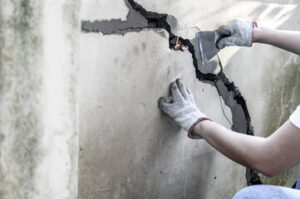Whether you are building a new home or buying an existing one, exterior cladding is an important decision. Learn about the pros and cons of Vinyl Siding before you finalize your choice.
Look for quality products with thick panels that can withstand high winds and resist heat, cold, and UV damage. Also, choose a contractor who offers an artistry warranty. Contact Vinyl Siding Charleston SC now!

Vinyl siding has many benefits, including the ability to be easily cleaned and maintained. Unlike wood and fiber cement siding, it is not susceptible to rotting, warping, or mold and mildew growth. It is also resistant to bending, scratches and extreme hot and cold temperatures. Its low maintenance requirements and wide range of color options make it a popular choice for homeowners. However, it is important to know how to clean your vinyl siding properly so you can prolong its lifespan and keep it looking new.
Generally, cleaning vinyl siding is as simple as using a garden hose and a mild detergent. The first step is to remove any loose dirt or debris with a hose sprayer attachment. Then, use a soft-bristled brush to scrub the surface of your vinyl siding. If you have a large area to cover, it may be easier to use a power washer. Be sure to check the power washer owner’s manual to ensure you are using the proper pressure setting. In addition, be sure to close any windows or shut off power outlets near the area you are cleaning.
Once you’ve finished scrubbing, rinse off the soapy solution with a garden hose again. It’s a good idea to work from the top down so that dirty water doesn’t run over clean areas. Finally, be sure to use a non-abrasive sponge for removing tough stains, such as rust. Always test any cleaner on a small section of your vinyl before using it to avoid scratching or damaging the surface.
It is a good idea to wash your vinyl siding at least once a year to keep it looking its best. Regular cleaning will help to prevent discoloration caused by dirt buildup, pesticides or herbicides used in your yard, or from mulch that contains fungus. It is also a good idea to trim nearby trees and bushes to prevent their branches from hitting your vinyl siding. Keeping your vinyl siding free from dirt, grime and debris will extend its life and appearance and make your home look its best.
Energy Efficient
Vinyl siding can provide a great deal of energy efficiency for homeowners, particularly when combined with quality insulation. As long as it is properly installed, and a moisture barrier is put in place to protect against mold and mildew, vinyl can help make homes more comfortable without increasing utility bills. In addition, it is a very durable material that resists wind and rain well.
When it comes to choosing a new exterior for your home, the choices are vast. There are many different colors, styles and textures, and picking the right one is critical to your home’s appearance and resale value. Fortunately, vinyl siding has come a long way since its initial introduction in the 1950s and now it is one of the most popular cladding options for modern homes.
Its low-cost, easy-to-maintain construction and durability make it a popular choice for residential applications. It also offers a range of architectural designs to fit the unique architecture of your home. While it is important to consider the pros and cons of each option, vinyl is a good choice for any home due to its durability, longevity and affordability.
Adding vinyl siding to your home can make it more energy efficient and reduce your heating and cooling costs, especially during the cold New Jersey winters. This is because vinyl helps to keep warm air inside during the winter while deflecting cold winds. In addition, the light color of vinyl helps to reflect sun rays in the summer, keeping the home cooler and more comfortable.
A high-quality vinyl siding installation can reduce your energy bill by up to twenty five percent, which is a significant savings over the course of a year. Additionally, vinyl is a very quiet material that helps to keep out outside noise, which makes it easy to relax at home.
When choosing a vinyl siding installer, look for ones that have been in business for years and have a solid reputation in the industry. They should have the proper tools and training to ensure a safe and professional installation. They should also use quality caulking to prevent water from penetrating behind the panels and causing damage or rot.
Durable
Originally introduced in the 1950s, vinyl has become a popular cladding option for homeowners thanks to its affordability, durability and visual appeal. While it was once criticized for its lack of quality and visual aesthetic, technological advances have made vinyl more versatile and durable than ever. Today, it can be manufactured to imitate the appearance of wood clapboard, cedar shakes and stone siding. This allows homeowners to customize their exterior and achieve a unique look that suits their home.
The polyvinyl chloride in vinyl is impervious to rust, mold and insect damage that can eat away at traditional wood siding. Because of this, vinyl is also much easier to maintain. In fact, regular washing and inspection is all that is needed to keep vinyl looking new. It is also resistant to wind, which makes it a great choice for homeowners who live in areas with frequent storms and hurricanes.
Additionally, vinyl does not rot like natural options and can be used around the edges of your home for extra protection. However, if your siding becomes damaged or worn over time, it is important to replace it promptly to prevent water infiltration and rot.
To ensure the longevity of your vinyl, make sure it is installed by a professional who follows proper installation techniques. The surface should be clean and dry before beginning the installation process, and a weather barrier should be installed to protect against moisture infiltration and mold. Proper nailing technique is essential to prevent buckling and warping, and it is important to leave room for expansion and contraction as the weather changes.
Whether you are considering replacing your existing cladding or building a new house, vinyl may be the perfect solution for you. With its low maintenance requirements and durability, this material can stand up to the elements for decades and save you money on energy costs. If you are unsure about whether or not vinyl is right for your project, contact us today for more information and to discuss your options. We are happy to help! Our experts will answer any of your questions and provide the best possible solution for your needs.
Affordable
If you’re looking for a low-cost exterior for your home, vinyl siding is one of the most affordable options. Although it’s not the most environmentally friendly, it doesn’t require re-sealing or rot and is resistant to insect damage and weather extremes. It’s also easy to clean and doesn’t need much annual maintenance. In addition, it is available in a variety of colors and styles, making it easy to customize your home’s exterior without breaking the bank.
Many homeowners choose to replace their current siding with vinyl because they want to improve their home’s appearance and resale value. Before you choose a color or style, consider your neighborhood and whether it will mesh with the other homes in your area. You should also check if your contractor offers financing. You may be able to borrow against your existing home equity line of credit, or you might prefer to use a home improvement loan. You can also ask your contractor if they offer discounts during the slow season.
While some homeowners worry that vinyl siding looks plastic, high-quality products now offer realistic textures and wood grain patterns. You can even select a color that will make your house look like cedar or stone, depending on your preferences. In addition, you can add vinyl trim around windows and doors for a finished look.
Vinyl can be used in a wide range of architectural designs, and it’s easier to install than other materials. However, it’s important to hire a reputable contractor who is licensed and insured. You should also prepare the area by removing all of the old siding, trimming, and debris. Afterward, you should install a moisture barrier and a solid base of drywall to prevent water infiltration and ensure that your home’s frame is in good condition. You should also check if you have any local or state tax credits for energy-efficient installation. Finally, it’s a good idea to buy extra vinyl material to allow for waste during installation and future repairs.







